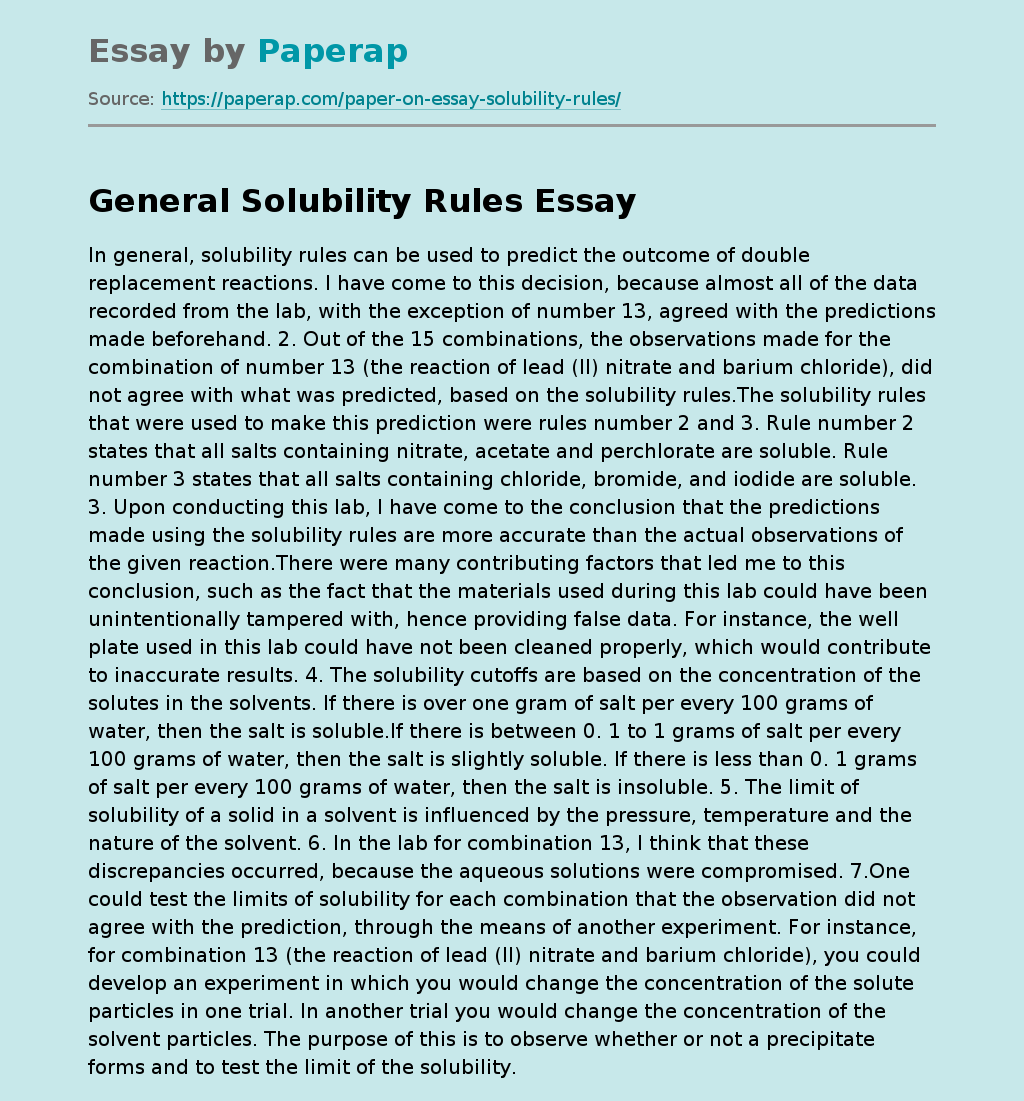General Solubility Rules
In general, solubility rules can be used to predict the outcome of double replacement reactions. I have come to this decision, because almost all of the data recorded from the lab, with the exception of number 13, agreed with the predictions made beforehand. 2. Out of the 15 combinations, the observations made for the combination of number 13 (the reaction of lead (II) nitrate and barium chloride), did not agree with what was predicted, based on the solubility rules.The solubility rules that were used to make this prediction were rules number 2 and 3.
Rule number 2 states that all salts containing nitrate, acetate and perchlorate are soluble. Rule number 3 states that all salts containing chloride, bromide, and iodide are soluble. 3. Upon conducting this lab, I have come to the conclusion that the predictions made using the solubility rules are more accurate than the actual observations of the given reaction.There were many contributing factors that led me to this conclusion, such as the fact that the materials used during this lab could have been unintentionally tampered with, hence providing false data.
For instance, the well plate used in this lab could have not been cleaned properly, which would contribute to inaccurate results. 4. The solubility cutoffs are based on the concentration of the solutes in the solvents. If there is over one gram of salt per every 100 grams of water, then the salt is soluble.If there is between 0. 1 to 1 grams of salt per every 100 grams of water, then the salt is slightly soluble. If there is less than 0.
1 grams of salt per every 100 grams of water, then the salt is insoluble. 5. The limit of solubility of a solid in a solvent is influenced by the pressure, temperature and the nature of the solvent. 6. In the lab for combination 13, I think that these discrepancies occurred, because the aqueous solutions were compromised. 7.One could test the limits of solubility for each combination that the observation did not agree with the prediction, through the means of another experiment. For instance, for combination 13 (the reaction of lead (II) nitrate and barium chloride), you could develop an experiment in which you would change the concentration of the solute particles in one trial. In another trial you would change the concentration of the solvent particles. The purpose of this is to observe whether or not a precipitate forms and to test the limit of the solubility.
General Solubility Rules. (2019, Dec 05). Retrieved from https://paperap.com/paper-on-essay-solubility-rules/

